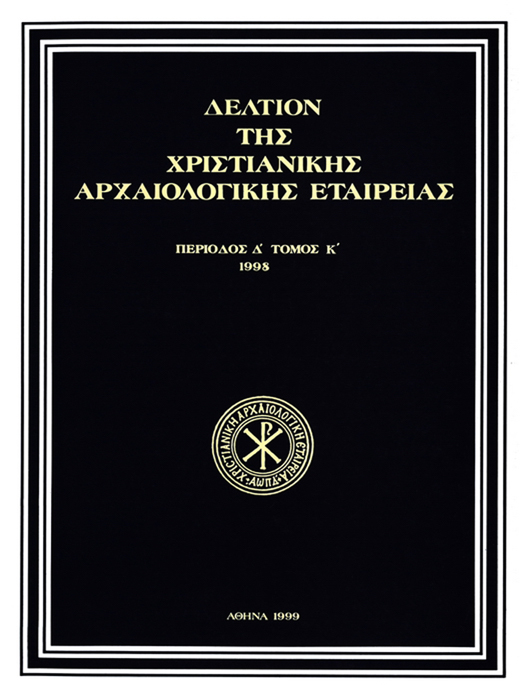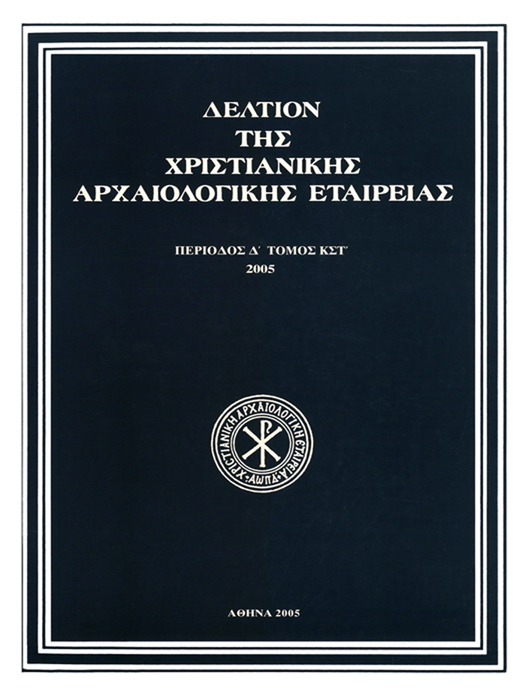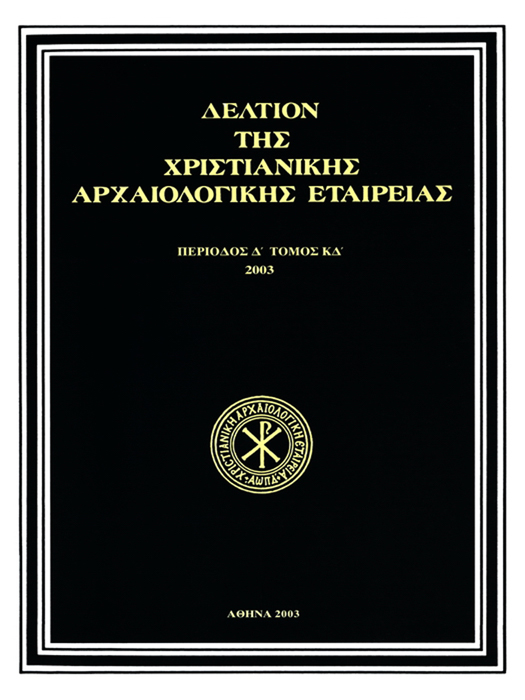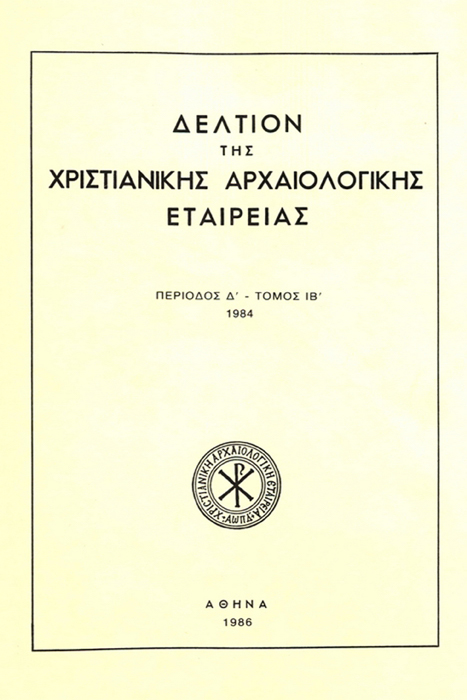The painter Xenos Dighenis in Epirus

Abstract
The Peloponnesian painter Xenos Dighenis decorated the churches of the Hagioi Pateres in Apano Floria, Selino district (Crete) (1470) and the Myrtia monastery in Aitolia (1491) with frescoes that were typical of the Cretan School. A third fresco ensemble in the church of the Panagia in Kato Meropi (Epirus) is preserved in very bad condition following a fire that also destroyed the inscription containing the date. The preserved frescoes also follow Cretan iconography and style, but their iconography has been influenced to a small degree by the art of Epirus and Macedonia (the Mocking of Christ), while their depiction of the elderly figures was influenced by the anti-Classical tendency of late 15th century painting in Western Macedonia (the hierarchs in the apse). Such influences do not exist in the monastery of Myrtia, and would suggest a later dating for the wall decoration of Kato Meropi.
Article Details
- How to Cite
-
ΒΟΚΟΤΟΠΟΥΛΟΣ Π. Λ. (2016). The painter Xenos Dighenis in Epirus. Deltion of the Christian Archaeological Society, 35, 143–182. https://doi.org/10.12681/dchae.1753
- Section
- Articles

This work is licensed under a Creative Commons Attribution-NonCommercial-ShareAlike 4.0 International License.
The copyright for articles in the journal Deltion of the Christian Archaeological Society (henceforth Deltion) is retained by the author(s), with first publication rights granted to the journal and to EIE/ EKT the right to store and communicate these articles to the public via its information infrastructures. By virtue of their appearance in this journal, articles are free to use with proper attribution for non-commercial uses under a ShareAlike obligation. The Christian Archaeological Society and EIE/EKT retain the worldwide right to reproduce, display, distribute, and use articles published in the Deltion in all formats and media, either separately or as part of collective works for the full term of copyright. This includes but is not limited to the right to publish articles in an issue of the Journal, copy and distribute individual reprints of the articles, authorize reproduction of articles in their entirety in another publication of the Christian Archaeological Society, and authorize reproduction and distribution of articles or abstracts thereof by means of computerized retrieval systems.











